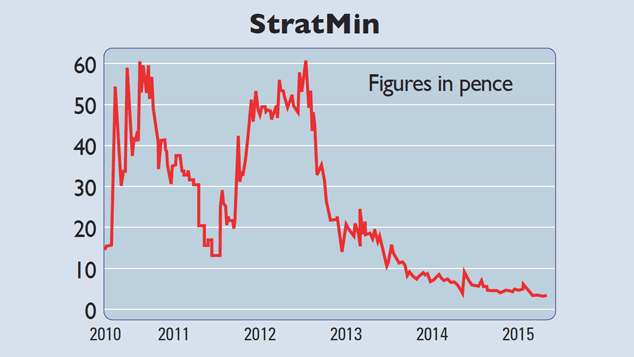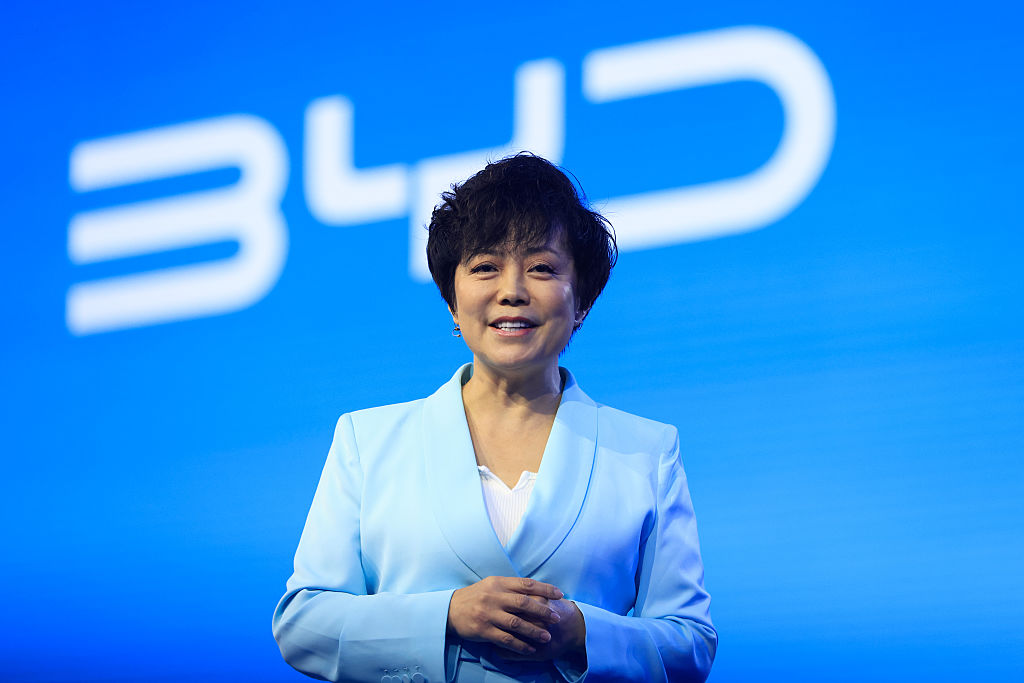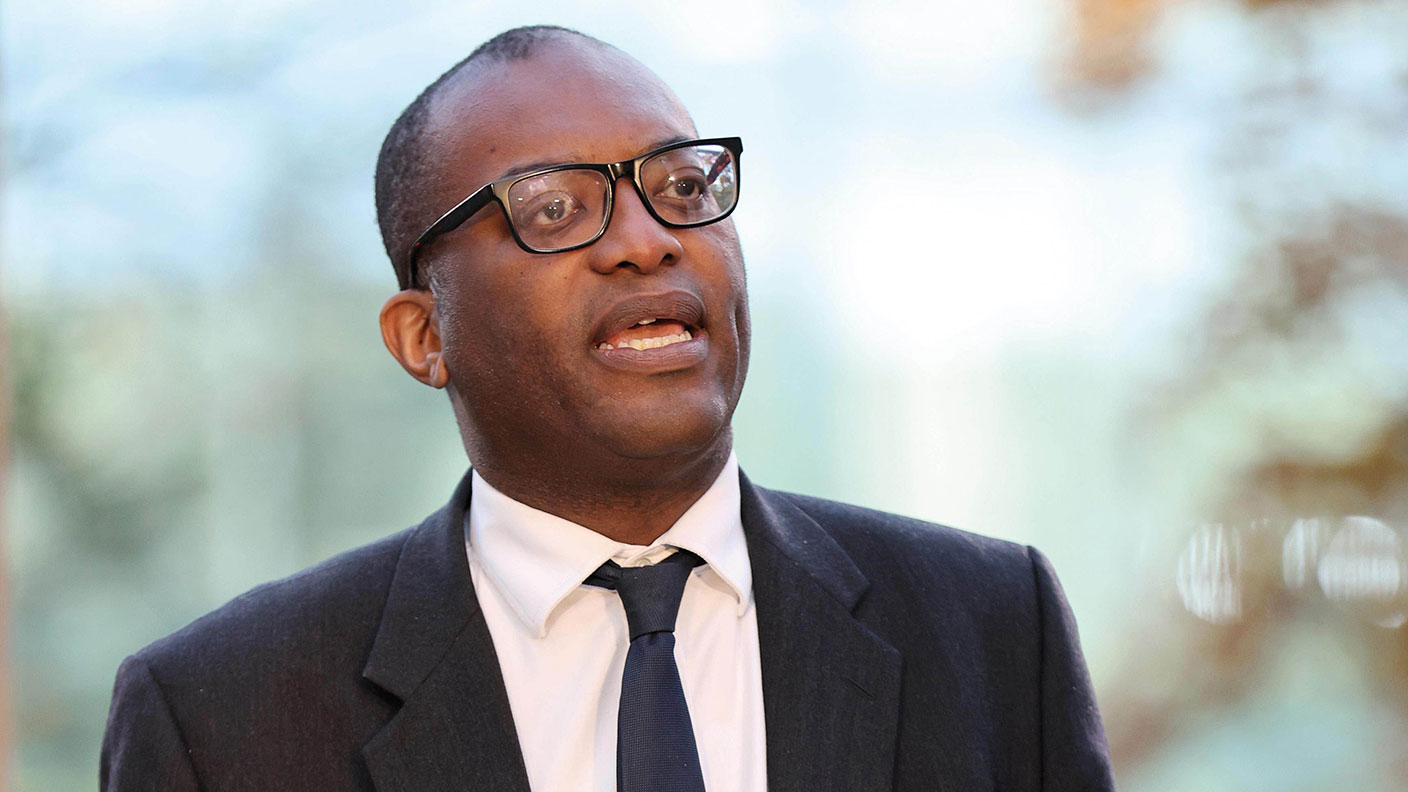Elon Musk: The Bond villain planning world domination
Electric car entrepreneur Elon Musk is plotting great things from his lair. Smart investors should get behind him, says Bengt Saelensminde.

The business world and journalists have been awaiting the next Steve Jobs an entrepreneur who's both an interesting character and who has the potential to turn the business world upside down. Right now, Elon Musk seems to be head of the pack to take on the role. Like Jobs, Tesla's superstar chief executive heads several innovative tech companies, and certainly has the visionary touch that it takes to disrupt any industry, no matter how big.
Follow him on social media site Twitter, and you'll see that Musk wants to change the world to revolutionise energy creation, use and storage, by moving us all well into the realms of renewable energy and self-sufficiency. His Twitter profile picture depicts the archetypal Bond villain a megalomaniac stroking a furry white cat. And in a recent tweet, Musk suggested that his plan for global domination kicks off in earnest in March next year. That's when he opens the book for orders on what he sees as Tesla's defining product the Model 3.
The car represents a pivotal point for Tesla bringing electric vehicles, and hopefully a renewable energy revolution, to the mass market. After that, the sky's the limit. Musk has big plans. And if they come through, they will be life-changing for us all. But even if they don't, the hype surrounding his various projects represent a big opportunity for the smart investor.
MoneyWeek
Subscribe to MoneyWeek today and get your first six magazine issues absolutely FREE

Sign up to Money Morning
Don't miss the latest investment and personal finances news, market analysis, plus money-saving tips with our free twice-daily newsletter
Don't miss the latest investment and personal finances news, market analysis, plus money-saving tips with our free twice-daily newsletter
So what's the big deal about Musk's recently tweeted plan? Arguably, it's the price point for the next-generation Tesla. He knows that you can't change the world with electric vehicles that cost considerably more than the conventional equivalent. His tweet talks about a Model 3 family saloon retailing at $35,000 just over £22,000. That sounds a fair whack. But bear in mind that after investing in the car itself, your running costs fall off a cliff (no petrol). That could make it a game-changer. Musk certainly seems to think so. He's planning on sales volumes leaping tenfold as the new release comes into play. Then it's up, up, up and away.
The order book opens six months from now, but potential owners won't be taking delivery for at least another year and a half from then. And many industry insiders claim that what Musk is aiming for is impossible anyway. Tesla can churn out 50,000 premium cars a year. But turning this into a mass-market industry is a whole different ballgame. It's certainly not a done deal. But it takes a brave man to bet against Musk. What's more, as an investor, I can think of at least two ways to make money out of the hype around this story all without taking on any exposure to Tesla itself.
How one car could change the world
The car industry has evolved into an intricate, globe-spanning jigsaw puzzle car production is really a matter of bringing together a set of components that have been outsourced to firms across the globe. And outsourcing is necessary because the modern motorcar is a painfully complicated machine it's hard enough managing the process of bolting the kit together, let alone having to manufacture the pieces on site too.
But shift to electric, and you've got a much simpler machine. Tesla makes and puts together its components on site.In the jargon, it's a "vertically integrated" manufacturer, the likes of which hasn't been seen since the days of Henry Ford. Not only is the electric car simpler to make, but its core components take up considerably less space in the finished unit too. Get rid of the engine and fuel tank, for starters. The drivetrain (all the gubbins between the wheels and the motor) is also much simpler and lighter. It all means there's more room for other things in the car. Musk promises to deliver a vehicle the likes of which we've never seen before and that I, for one, await in eager anticipation (see below).
The vision goes further. It's not just the car that's set to change, but the ecosystem of the whole car industry. For example, we're talking about redefining what a fuel-filling station entails. Tesla has already made significant steps toward a global "supercharger" network where Tesla owners can fill up en route for free. Come the rollout of its mass-market car, you can be fairly sure that roadside power points will be readily available. But most electric vehicles will charge domestically in any case. Either way, fuel costs look set to dive the Energy Saving Trust reckons driving 100 miles in an electric car will cost £2 to £3 in charging, against £12 to £18 on fuel for a petrol or diesel car.
Tesla sees no need for dealerships either. It will sell the things direct to the public either via its Apple-like high-street showrooms, or its website. As for servicing pah. The cars are wirelessly monitored, and developing problems can be fixed virtually perhaps with a software patch, or a tweak to the car's set-up. Or a roving technician can be sent out. In every way, Tesla aims to elbow out the middleman and cut costs. Not even an advertising executive in sight!
Critics say that Musk's megalomaniacal tendencies have pushed him too far. Not content with turning the motor industry on its head, Tesla is also gunning for the number-one spot in energy storage. The recently launched Powerwall battery storage system allows users to hold anything from hours' up to weeks' worth of energy storage from its sculpted batteries, clinging to any convenient wall. Musk's hand is also on the tiller at SolarCity, the domestic solar panel business. And that's not to mention his interstellar ambitions (in the form of SpaceX). "Why do everything, all at once?" critics ask. It's absolutely right to heckle.
Musk is clearly a visionary, but we can't get suckered into thinking that any entrepreneurial wunderkind can do no wrong. Tesla has come close to the brink of bankruptcy at least twice before, and some would say that the only thing standing between Tesla and bankruptcy now is its stout band of cheerleaders on Wall Street, waving pompoms all the way. On today's figures, Tesla loses about $4,000 for every car it produces. According to the Financial Times, the company lost $760m in the first six months of this year alone.And things could be set to get worse.
To make its Model 3 a reality, Tesla needs to bring onstream its Gigafactory, a $5bn battery production plant currently under construction in Nevada. So there's little doubt that if the markets lose faith in Musk's dream, there could be a whole world of trouble on the horizon. There's little room for disappointment. To keep the dream alive, Musk has to do everything within his power to deliver on all fronts. That means taking on even more risk. But here's where things start to get very interesting for investors.
An all-out sprint to 2017
The Gigafactory, the mass market Model 3, and a well-established supercharger network all are set to be in place in two years' time. Apart from anything else, the Gigafactory in itself would represent a doubling in global lithium-ion battery capacity.
Yet, even today, getting hold of battery-grade lithium is tricky the price of the stuff has risen by 15% this year alone. Tesla knows it's got to encourage the growth of a new lithium ion supply chain if it wants to avoid driving prices even higher. Cobalt and graphite are key ingredients too. Again, all are in tight supply. This is why Tesla is bypassing the existing supply chains and going direct to the source.
Tesla recently announced a deal with junior miner Bacanora Minerals (Aim: BCN) and Rare Earth Minerals (Aim: REM) to source lithium from their joint venture in the Sonora region of Northern Mexico. Now, given that the mine isn't even in operation yet, it's a pretty bold move. But then again, there's little doubt that the key reason for awarding the contract was to give the Sonora team credibility so that they can now find finance for their project.
Last time I wrote on this subject (back in June), I suggested taking a punt on these two stocks in the hope that exactly this would happen. The share price of each has risen some 25% to 30% since then. But assuming that funding can be found, I reckon there's bound to be plenty of mileage left in both stocks (I own both of them). However, they aren't the only companies that can profit. Below I take a look at some other potential winners all high-risk below, as well as an unusual (and again, risky) way to profit from Tesla-mania.
Two miners to snap up now
As an eco-friendly company, Tesla has made it clear thatit will not source raw materials from anyone but the mostenvironmentally respectful suppliers. I suspect that this is therationale behind its lithium supply contract from Sonora, Mexico this is an open-pit mine, with a simple extraction process.But looking to the other two key battery components (cobalt andgraphite), Tesla faces problems.

Cobalt is largely sourced from the politically dodgy Congoin Africa. Tesla won't deal with these guys, and is likely to beout there right now, looking for a deal with a North Americansupplier. That means that Canada-listed Fortune Minerals(Toronto: FT) could well be a stock to watch. As with so manyCanada-listed miners, it's had a torrid time over the last fewyears. The company has sold down much of its asset base, tosettle debt and keep its cobalt dream alive. The stock has fallenfrom 25Canadiancents to just3.5 centsover the lastyear.
But in arecentstatement, there was a chink of light. The firm says thatconfidentiality agreements have been signed with globallyrecognised firms. At this sort of level, we're talking about"option money" the stock is so cheap, it's like having anoption to the upside, but it's likely that you'll lose your initialpremium. In other words, you could very easily lose 100%of what you put in so don't bet the house but if it doescome together, there could be all manner of fireworks for theshare price. This is highly, highly speculative, but interestingnonetheless.
Turning to the other key component graphite on the otherhand, comes largely out of pollution-ridden mines in China.Again, Tesla doesn't want any part of this. Synthetic graphitecan be sourced from North America and that, for the moment,has been Tesla's approach. But the price of synthetic graphiteis many multiples that of the naturally occurring product.There could be a better approach.
StratMin (Aim: STGR) listed on Aim around 18 months ago,and is now at a defining moment. Having got off to a very slowstart (the typical delays and mine development issues yousee with these sorts of companies), its share price is off bysome 93%. Now trading at 4p (to buy), it could be a great puntfor the brave. That's because in the last couple of weeks thecompany signed a deal with Australia-listed Bass Metals for acash injection of up to £4m to help develop mines in Mauritiusand Madagascar.
Now StratMin is already in operation, and itsgraphite production is expected to turn cash-flow positive thisyear. Stratmin is capitalised at £5.5m. Yet Bass has just paid£4m for up to 35% of its key projects. As CEO Brett Boyntonsays: "This transaction enables the company to fund the groupwith investment at a substantial implied premium to the currentshare price and demonstrates a strong endorsement of ourstrategy."
Again, this is a highly speculative investment. But in myexperience, one of the best times to invest in a speculative juniorminer is when other investors have given up, and corporateinvestors get aboard. This is a rare occasion when privateinvestors can get aboard at a better price than the corporates.That doesn't mean it's a sure thing but it's a good sign,nonetheless. (Full disclosure: I own some of this stock).
A speculative punt: buy the car itself
Elon Musk is throwing everything he's got at achieving his idea of shifting the world to renewable energy. In order to make this work, he's got to hit the market with the Model 3 Tesla at a given price-point, not a given profit-point. So anyone who buys the Model 3 is likely to be buying the car at below its cost of production.
Now, while that doesn't in itself make it a no-brainer of a buy, I suspect it probably will be. Media reports have always rated Tesla cars as "best in class". And yet, here's a car that's coming in at an "average" price for its sector. And let's not forget, after you've got the thing, the running costs plummet too. The Model 3 also arrives at half the price of the existing cheapest Tesla that'll be quite a pull for the fashion-conscious eco-bod.
In short, I expect to see a massive over-subscription problem developing by the time this car hits the streets think of the sort of hype normally reserved for Apple products, and you get an idea of what I'm talking about.
This excess demand may well lead to a surge in price in the second-hand market for the Model 3. Although this is by no means the norm, a resale premium is not unheard of in the car market. Yes, usually it's at the upper end of the market, but we've also seen it among the more humble motors, such as BMW's revitalised Mini, which was released in the early 2000s.
So what's the investment angle? The advantage of buying prior to launch is that you're rarely asked to put down the full value of the car on day one. Let's say that in March next year Tesla asks for a 20% deposit to get on the list for its $35,000 Model 3. That would mean a deposit of $7,000. Should enthusiasm for the car be such that it fetches, say, $50,000 in the new/second-hand market, that would mean a potential $15,000 for the investor... that's more than a 100% return on capital.
This is pure speculation of course. But I am certainly planning on taking the plunge myself.
Get the latest financial news, insights and expert analysis from our award-winning MoneyWeek team, to help you understand what really matters when it comes to your finances.
Bengt graduated from Reading University in 1994 and followed up with a master's degree in business economics.
He started stock market investing at the age of 13, and this eventually led to a job in the City of London in 1995. He started on a bond desk at Cantor Fitzgerald and ended up running a desk at stockbroker's Cazenove.
Bengt left the City in 2000 to start up his own import and beauty products business which he still runs today.
-
 UK blue chips offer investors reliable income and growth
UK blue chips offer investors reliable income and growthOpinion Ben Russon, portfolio manager and co-head UK equities, ClearBridge Investments, highlights three British blue chips where he'd put his money
-
 Rightmove: Asking prices set to rise 2% in 2026 after post-Budget market rebound
Rightmove: Asking prices set to rise 2% in 2026 after post-Budget market reboundBuyers and sellers who held off in anticipation of the Budget will come back to the market and contribute to asking prices increasing next year, according to Rightmove
-
 The Stella Show is still on the road – can Stella Li keep it that way?
The Stella Show is still on the road – can Stella Li keep it that way?Stella Li is the globe-trotting ambassador for Chinese electric-car company BYD, which has grown into a world leader. Can she keep the motor running?
-
 The state-backed “gigafactory”: all aboard the next Concorde
The state-backed “gigafactory”: all aboard the next ConcordeOpinion State functionaries do not have a good record of picking winners. That won’t stop them doing it again
-
 The semiconductor supply crunch: what’s it about and what does it mean for you?
The semiconductor supply crunch: what’s it about and what does it mean for you?Analysis The world is facing a shortage of semiconductors. Saloni Sardana explains why the world has run out of them and why the chip shortage will ripple across dozens of industries.
-
 Quiz of the week 16-22 January
Quiz of the week 16-22 JanuaryFeatures A Japanese car-maker announced plans to continue its UK operation, safeguarding 6,000 British jobs. But which one? And what else happened this week? Test your recollection of the events of the last seven days with MoneyWeek's quiz of the week.
-
We're near the tipping point for electric cars
Editor's letter Demand for electric cars is soaring soared. And while the switchover will be expensive, we could be near a tipping point.
-
 How to invest as electric cars get the green light
How to invest as electric cars get the green lightCover Story As emissions caps choke demand for diesel vehicles, electric cars will start motoring. Buy lithium miners and battery makers to cash in, says Julie Boote of Pelham Smithers Associates.